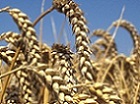Crop production

To cope with the challenges of climate change, crop production must adapt (e.g. crop varietal selection, plant breeding, cropping patterns and ecosystem management approaches) and become resilient to changes (frequency and intensity). Crop production can contribute to mitigating climate change, for example by reducing the use of inorganic fertilizers, avoiding soil compaction or flooding to reduce methane emissions (e.g. in paddy rice systems) and sequestering carbon (e.g. planting perennial crops and grass species).
Sustainable crop production intensification described in detail in FAO’s publication Save and Grow and the FAO Building climate-smart cropping systems web pages provides the possibility to produce more from the same area of land while conserving resources, reducing negative impacts on the environment and enhancing natural capital and the flow of ecosystem services.
Temperature increase, variability in rainfall and its distribution, and the rise in ocean water potentially have a significant effect on rice production. High atmospheric temperature could reduce rice yield in tropical climate areas, while variability in rainfall and its distribution could lead to more frequent and severe floods and droughts. However, there are many opportunities to address these challenges. Such opportunities can be found through a number of practices such as Conservation Agriculture (CA), the System of Rice Intensification (SRI) and saving water through Alternate Wetting and Drying (AWD).
